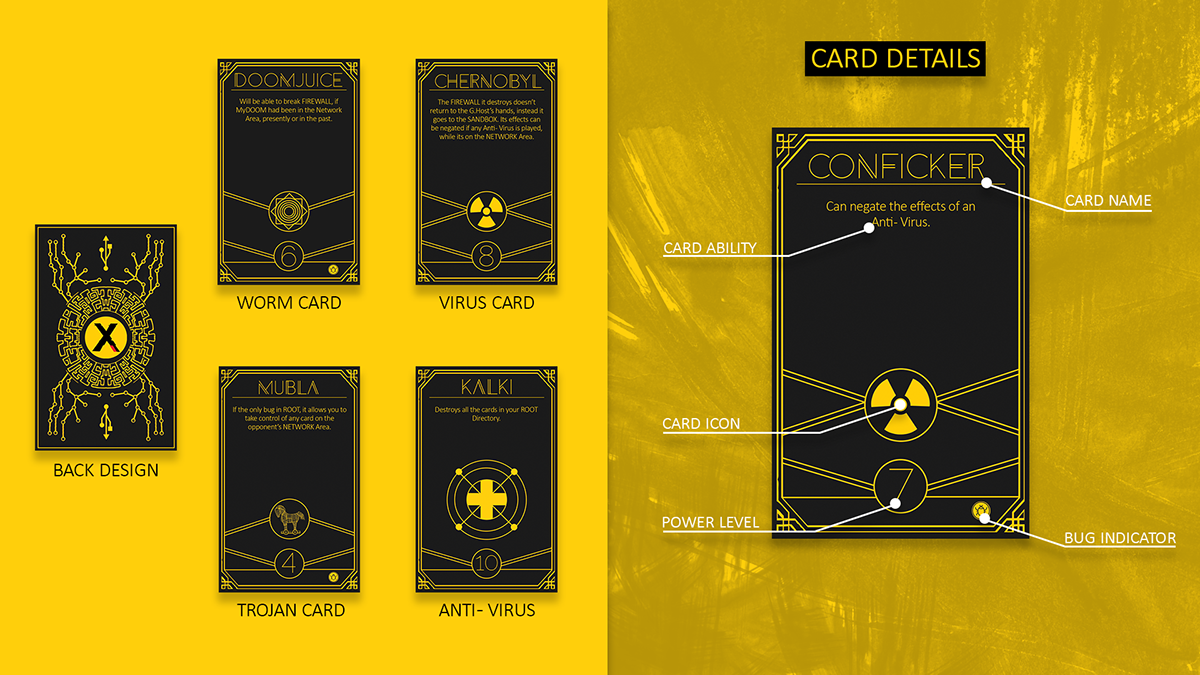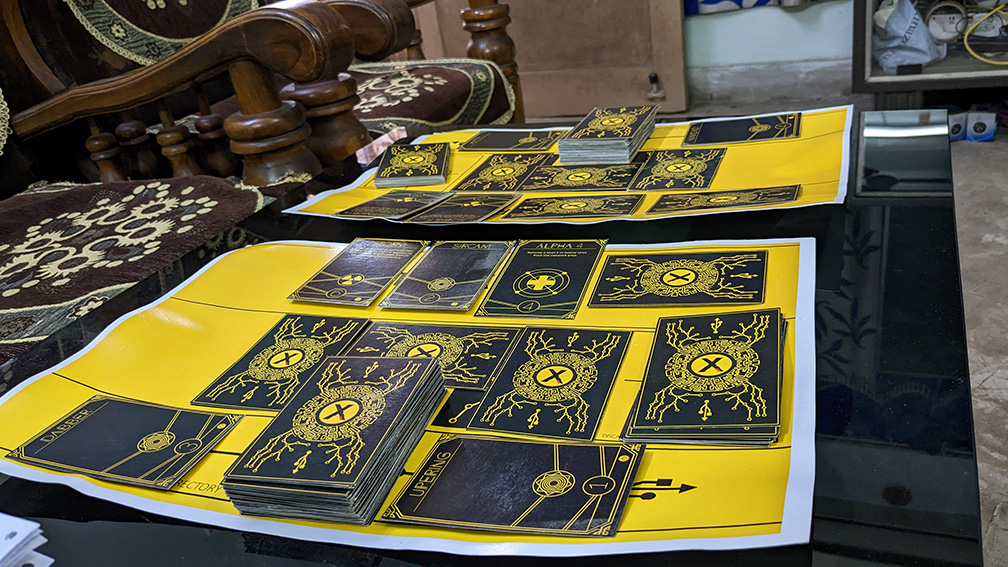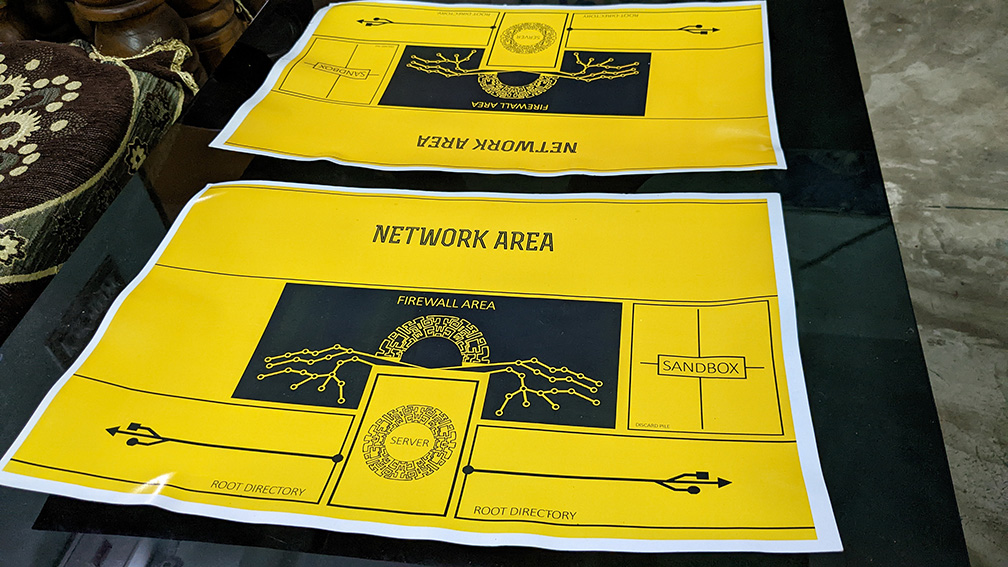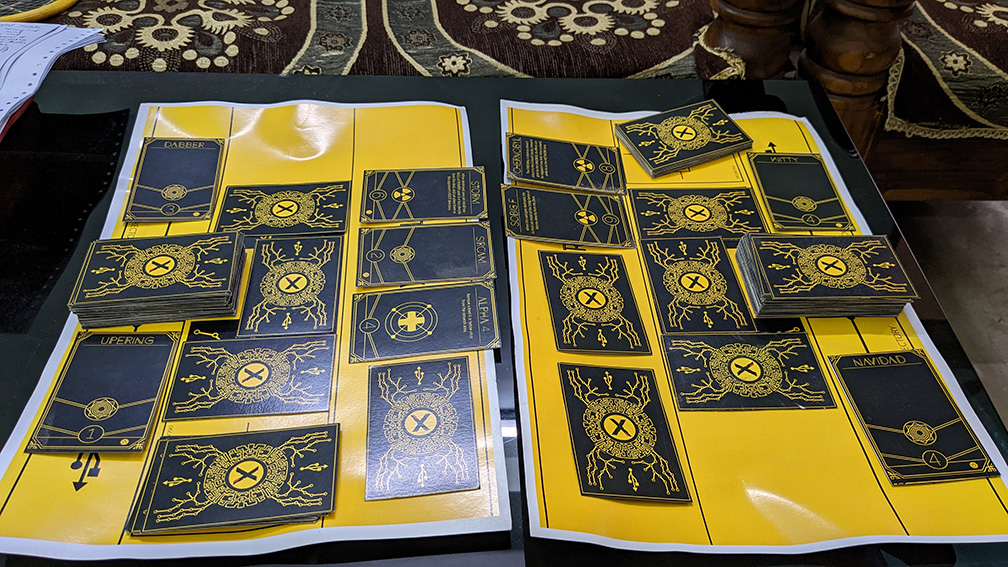
Glitch: The Strategic Card Game
| Game Genre | Trading Card Game |
|---|---|
| Game Description | A trading card game based on the theme of Cybersecurity and Penetration Testing (ethical hacking). |
| Project Length | 6 Months |
| Role | Created the game, Researched computer networking, designed the gameplay, created the visuals, playtested with different groups |
| Platform | Board Game 🎲 |
| Tools used: | Photoshop, Illustrator, Excel |
What is Glitch?
Glitch is a trading/collectible card game that tries to simulate a computer networking duel between two players (referred to as G.Host within the game). The game uses elements of deckbuilding as a strategy to optimise the best possible combination of cards to play out your preferred combos/playstyle. The main objective for the players being to destroy the opponent’s Server using Viruses, Worms, Trojans and Anti-Virus cards.
Summary of Responsibilities:
I wanted to create a game that somewhat mimicked the DefCon’s Capture the Flag event as a card game. I researched for the simplest ways to represent a computer network, based on the OSI Model of Computer networking (where I felt the L3 layer suited the most for designing the game around).
I set the main gameplay objectives and researched and compiled various viruses, worms and trojans that we had through out history to create agents (cards) for the gameplay and derive their unique abilities, and scale their power levels around a narrative.
I illustrated the card designs and play-arena board, based around a consistent design system.
Playtested the game for balancing the various card power levels, abilities, counter systems and game flow with a smaller group at first. I scaled the playtesting to a larger group of (40 people) after the first version was produced. Also, built an entire narrative (story and event) for the larger playtesting session.
Gameplay Brief:

Visual and Narrative Design:
As the game tackles a concept that seems complex to hear about: Computer Networking! I had to break it down the networking elements to their most basic forms and generate gameplay systems from them. I added a flashy narrative to alter the context for the game. The act of networking seen more as a Duel rather than a studious task.
I limited the color palette to a two-color system to mirror the 0/1 (binary) nature of the computing language. Plus, the color language had to show an authoritative tone at a time of scarcity, with cities plagued by desertification. The combo of yellow and black felt right.

Playtesting:
Glitch went through a lot of iterations, with balancing issues at card level. I tested the game first with a single person (my opponent duelist) to establish a smooth game flow.
🃏 Drawing Cards → 🤑 Placing Cards to generate processing costs or attack → 👊🏽 Attacking the opponent → 🛑 Ending Turn → 🪤 Activating Trap cards if it’s opponent’s turn
Then, I tested between a group of 3 people, to find out balancing issues, game flow inconsistencies, logical flaws. Most of the major issues that were caught during these sessions decided the current state of the game. (Discussed below as part of the initial design iteration)
Finally, I organised an event to gather a larger playtesting crowd. This playtesting has a separate case study here: Urban Crusade. This engagement from a wide variety of persona types, helped streamline the game for different player types.
Some duelists preferred consistent attacks with lower power level cards. Others preferred to wait for a higher power level cards to decimate their opponents.
↪️
This helped generate ideas for new cards to bring in more synergy and combos.
❓ A consistent doubt that lingered with me was: Whether Glitch depended on luck or the probability you drew out better cards from the deck or more skill based with player dictating the perfect attack and defence strategies?
↪️
This required more playthroughs to figure out. This event provided the scope to do just that.

Read on for more detail on the development process
Early Design Process:
Seed Crystal:
To adapt DefCon’s Capture the Flag contest into a card game.
Research:
My initial research was divided into parts:
- Learn how Computers interact with each other i.e. network with each other.
- Learn strategic card mechanics from games like The Netrunners, Duel Monsters (Yu-Gi-Oh) and Duel Masters.
How two systems interact with each other:
Two servers interact with each other through the networking area, albeit protected by their firewalls. Th e servers could very well be represented by our decks, from where we draw all the game content, same as the way the server hosts information.
Now, I needed entities to simulate attack/defence in the networking area. Hence, the usual suspects: Virus, Worms, Trojans and Anti-Virus.
WIP beyond this point…



